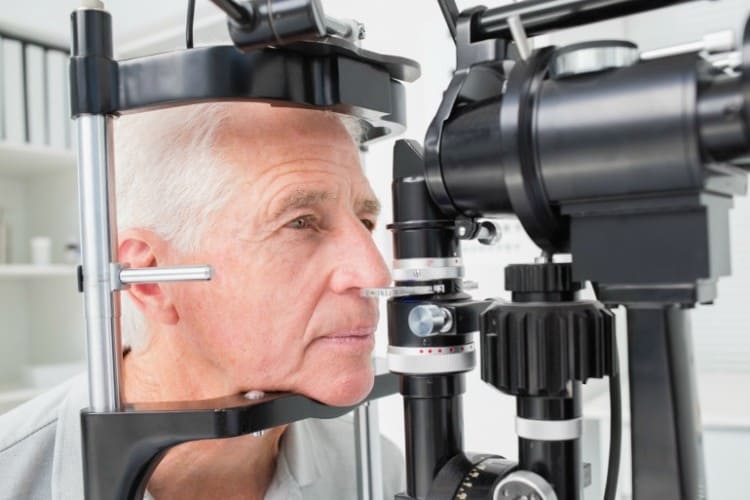An adult-aged individual should receive an eye exam at least once every one to two years. In addition to examining the overall health of the eye, the eye doctor can detect a wealth of conditions such as glaucoma, farsightedness, nearsightedness, astigmatism, cataracts, high blood pressure and more.
Diabetes is a condition that an eye exam can detect, as well. Diabetes is a condition in which a person’s body produces an insignificant amount of insulin. Untreated diabetes can cause problems such as damage to the retina and total loss of eyesight. Keeping up with regular eye exams is vital.
How an Eye Doctor Performs an Exam
A routine eye exam has several parts to it. The first part of the exam involves a conversation between the eye doctor and the patient. The eye doctor will ask the person about any known illnesses that he or she may have. The doctor may also ask the patient if there are any current sight problems or complications, as well.
The second part of a routine eye exam is the visual acuity test. The visual acuity test is a test that involves the reading of numbers and letters of various sizes. The patient stands approximately 20 feet away from a chart, and the doctor asks that person to read the information that he or she can see. The numbers and letters get smaller and smaller with each line, and the patient must cover each eye and read all the lines. The visual acuity test allows the doctor to determine the prescription strength that the patient needs.
The next part of the eye exam is the eye pressure test during which the doctor will place dye in the patient’s eyes that will enlarge the pupils. Next, the doctor uses a series of lights to examine other parts of the eyes and make sure that every part is working properly. Several other tests may be administered during the exam. Some common tests that eye doctors administer are color acuity tests, retinal examinations, glaucoma screenings and more.
The eye doctor will give his diagnoses after he or she performs all necessary tests. Some eye complications require glasses or contacts while others may require LASIK surgery. Diabetes is a condition that an eye doctor may suspect if he or she notices certain symptoms during the exam.
How the Eye Doctor Can Detect Diabetes
A routine eye exam can show symptoms that point to a possible diabetes problem. Exams of symptoms that could indicate diabetes are strange fluids and blood drops in the retinas. The eye doctor can look into a person’s eye and see the fluid coming from the tiny vessel in the retina. The appearance of yellow fluids or small blood droplets are symptoms of serious concern. Such symptoms would prompt the eye doctor to ask a series of questions that may prompt the patient to go to a regular doctor to receive testing for diabetes. The regular doctor would then send the patient for a glucose test, a urinalysis and any other test that may pinpoint a firm diabetes diagnosis.
Diabetes is a condition that should be treated as soon as detected. Because of the ability to discover symptoms through a routine eye exam, eye doctors frequently become the first to detect whether a patience has diabetes and can take the necessary steps from that point. There are many other benefits to schedule a routine eye exam and it is equally important to choose a physician that understands exactly what to look for and how to treat any conditions that may be discovered.
To schedule your appointment with one of Ft. Worth’s most renowned and reliable eye specialists, contact the Marvel Eye Center today!


